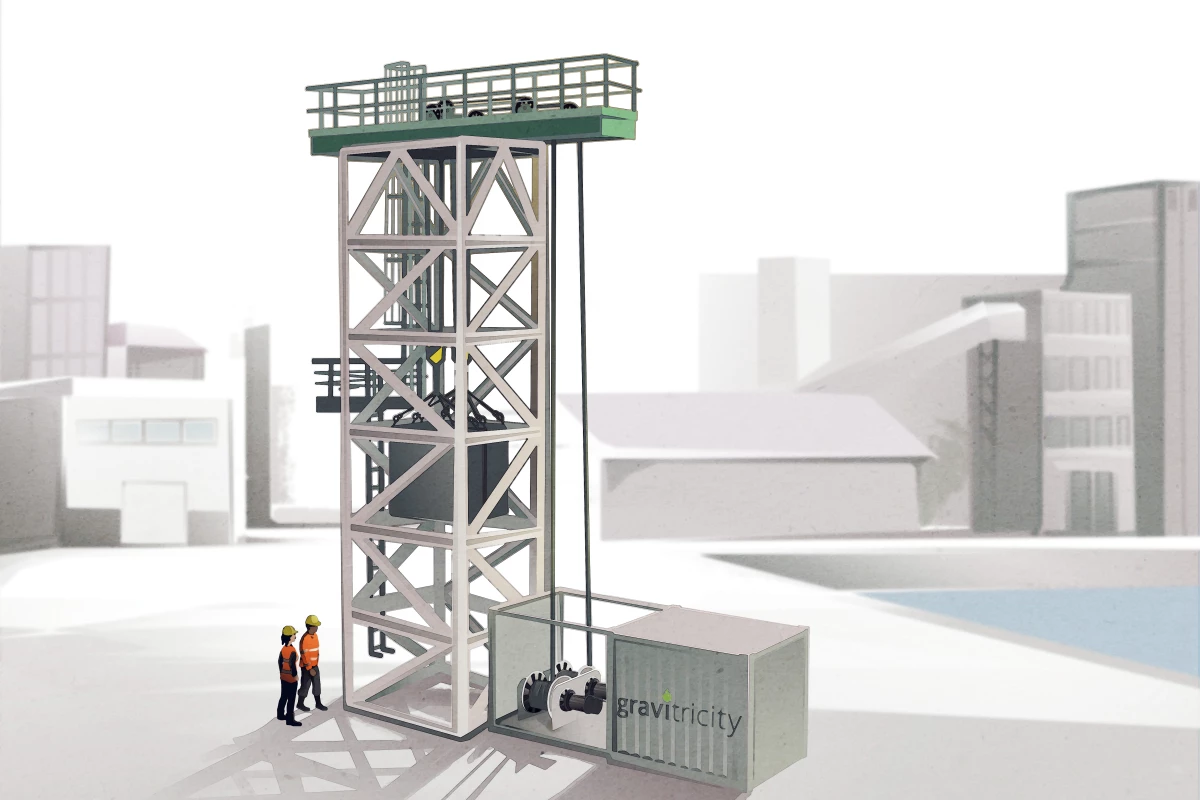As renewable energy generation grows, so does the need for new storage methods that can be used at times when the Sun isn’t shining or the wind isn’t blowing. A Scottish company called Gravitricity has now broken ground on a demonstrator facility for a creative new system that stores energy in the form of “gravity” by lifting and dropping huge weights.
If you coil a spring, you’re loading it with potential energy, which is released when you let it go. Gravitricity works on the same basic principle, except in this case the springs are 500- to 5,000-tonne weights. When held aloft by powerful cables and winches, these weights store large amounts of potential energy. When that energy is needed, they can be lowered down a mineshaft to spin the winch and feed electricity into the grid.
Gravitricity says that these units could have peak power outputs of between 1 and 20 MW, and function for up to 50 years with no loss of performance. Able to go from zero to full power in under a second, the system can quickly release its power payload in as little as 15 minutes or slow it down to last up to eight hours.
To recharge this giant mechanical battery, electricity from renewable sources power the winches to lift the weights back to the top. In all, the system has an efficiency of between 80 and 90 percent.
Ultimately, this kind of system should be able to store energy at a lower cost than other grid-scale energy storage systems, such as Tesla’s huge lithium-ion battery in Australia. The concept sounds very similar to the one behind Energy Vault, which uses a crane to hoist concrete blocks into a tower.
That said, Gravitricity seems to be further ahead in development. The company is now in the early stages of constructing a demonstrator facility to test out the concept next year. The tower will stand 16 m (52.5 ft) tall, lifting and dropping two 25-tonne weights in order to generate 250 kW.
“In one test we’ll drop the weights together to generate full power and verify our speed of response,” says Miles Franklin, lead engineer at Gravitricity. “We’ll then run tests with the two single weights, dropping one after the other to verify smooth energy output over a longer period, alongside a program of other tests to demonstrate and refine the full capabilities of the system.”
The custom-built winches and control system are being constructed by Huisman in the Czech Republic, while Kelvin Power is fabricating the lattice tower in Leicester, UK. The separate pieces will then be shipped to the port of Leith in Edinburgh for construction of the demonstrator.
Testing of this facility is due to begin in (northern hemisphere) spring 2021, and a full-scale 4-MW project will begin later that year.
The Gravitricity system is described in the video below.
Source: Gravitricity




